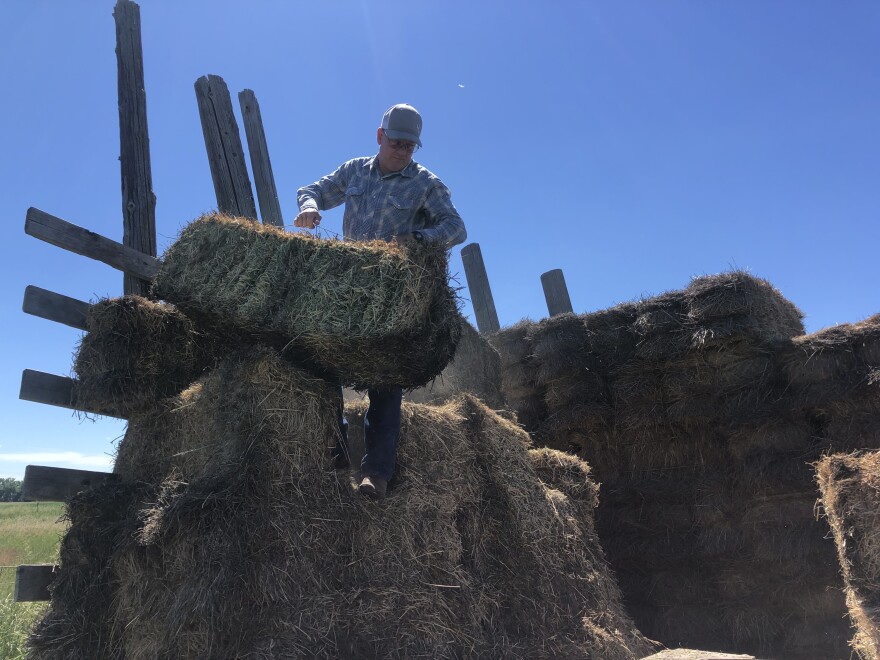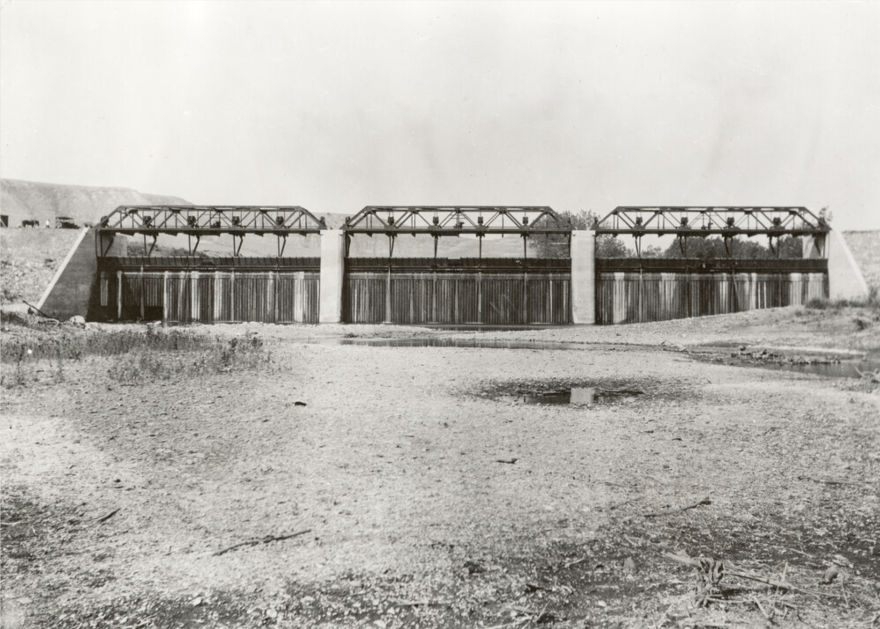“Everything ties to the water”
As the Milk River flows through a diversion dam near Glasgow, Jeff Pattison walks along the top of the concrete and steel structure.
Pattison’s grandfather worked on the crews that built the dam a century ago. Now, a hundred years of rushing water and erosion reveals rusty steel supports inside the concrete..
“Look at the concrete on it. It's just like starting to crumble up.” Pattison says. “And, you know, it's. It's a testimony to how they built things way back when it's held this long, to be honest with you good lord.”

Pattison has called this part of northeastern Montana home for his entire life.
“Gramp’s been here for, you know, since the turn of the century, basically. And we're still here after the turn of the last century. And hopefully my grandkids will be here after the turn of the next century.” Pattison says “So that's, we've got deep roots. And everything ties on the water.”
The Milk River Project was built to divert water from the St. Mary River near Glacier National Park and send it north and east for drinking water and irrigation. The project supplies most of the water used by the string of rural communities that dot the prairie along Highway 2.
But a critical link to that water broke last month. Officials called it a catastrophic failure of a siphon located near Babb, right at the project's head.
Pattison lives 350 miles east from the rupture. Reservoirs here, like much of the Hi-Line, were filled before the failure. So, there’s water for this year. But long term, Pattison worries what happens to the thousands of people who depend on that water if the system isn’t fixed.
“Rip the top off of Montana, eastern Montana that's right,” Pattison says. “That's the end of it. There's no more future generation, there’s no more kids.”
According to The Milk River Project, it irrigates a hundred thousand acres of farmland and provides drinking water to nearly 20,000 people.
The river is the bedrock of the regional economy. Its agricultural output creates close to a third of jobs on the Hi Line and props up the local tax base.
“Of all the disasters that could happen”
Marko Manoukian is the co-chair of the St.Mary’s Rehabilitation Working Group, which brings irrigators and state officials together to pursue money to repair the system. Over coffee and chocolate cake at his kitchen table near Malta, he says he was out riding with his son when he heard irrigators’ worst fear had been realized:
“So when we came home, I said, you take care of the horses, I'm going to start calling offices,” Manoukian says. “So I tried to reach out to all our congressional folks, Lieutenant Governor Kristen Juras, telling them that the worst, you know, of all the disasters that could happen– it had happened.”

Manoukian says a year without water would be devastating to producers across the Hi-Line.
“It would be disastrous because there would be 700 farms that directly irrigate with this that would be upside down. I mean, I couldn't even sell my place because it doesn't have any water. There wouldn't be value to it,” Manoukian says.
It takes an interagency group of state, tribal and federal partners to make the Milk River Project Work. But it’s operated by the Bureau of Reclamation.
Ryan Newman heads the Bureau’s Montana office. He says the agency is still evaluating short and long-term repair options.
“There was a multi-agency interdisciplinary team analyzing things from the operational standpoint, a structural standpoint, geotechnical standpoint, as well as environmental implications and in the environment in the immediate area. And they're developing a series of recommendations right now,” Newman says.
The Bureau of Reclamation and the Milk River Joint Board of Control will hold a public meeting in Malta on July 9th to provide updates on repairs and outlook for the next water year.
Jen Patrick, project manager for the Milk River Joint Board of Control, says restoring water flow is the only option.
“We're in a we can't fail situation. So we're going to push forward with ‘there will be water in 2025’,” Patrick says.

The break of the siphon near Babb isn’t the only recent major failure of the St Mary Project. In 2020, part of the canal collapsed and project officials estimated it put 10% of Montana’s agriculture economy in jeopardy. It took five months to repair and about 8 million dollars.
There’s no estimate yet on the cost to repair the latest failure.
“It’s not going to last forever”
Irrigators have long lobbied Congress to pay more for updates and replacements on the system.
The current funding agreement means irrigators pay 75% of the operation and maintenance of the system, with the government footing the rest of the bill.
Patrick says it’s a tough sell to get more money from Congress because the project serves a relatively small number of people in eastern Montana.
“You know, we're not talking millions of people,” Patrick says. “It's a huge area. But it's not what they're used to dealing with in D.C. in terms of large projects.
Glasgow farmer Jeff Pattison says for decades he's been a part of meetings where irrigators have sounded the alarm that the 100 year-old system needed major repairs.
“It was so frustrating because we kept having meetings, but just didn't seem like we were getting a lot of stuff done,” Pattison says. “And lo and behold, now you're looking back on it. If we would have had a disaster back then, we probably could have got something done. But why does it have to take a disaster to get something done? Why do we always have to be reactive instead of proactive?”

Money has started flowing toward repairs to the project. Before the failure in Babb, over $100 million in state and federal funds had been set aside for repairs, and more money could be on the way in the form of the Fort Belknap Water Compact, recently passed by the Senate and awaiting a vote in the House. Governor Gianforte and Montana’s congressional delegation have also requested emergency funding from the Biden administration for repairs to the siphons.
Pattison says the crumbling Vandalia dam illustrates that spot treatments won’t work when the entire project needs repair.
“This is every day. It degrades more. Every day it degrades more,” Pattison says. “And when I see it, it's like, folks, I got to tell you, it's not going to last forever. “



